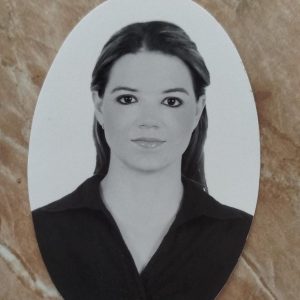Facet Joint Pain: Imaging‑Guided Stem Cell Injections Explained
Facet joints are small stabilizers along the spine that can become inflamed or arthritic and cause localized back or neck pain. When medications, physical therapy, or steroid shots fall short, imaging‑guided stem cell injections for facet joints may offer a regenerative, root‑cause approach for carefully selected patients.
What Are Facet Joints—and Why They Hurt
Each vertebra connects to the next through a pair of facet (zygapophyseal) joints. These joints guide motion and are lined with cartilage and a capsule containing lubricating fluid. Overuse, posture, degenerative changes, or prior injury can irritate the capsule and cartilage, leading to pain with extension, rotation, or prolonged standing.
Common Symptoms
- Achy pain just off the midline (neck, mid‑back, or low back)
- Worse with leaning back or twisting; stiffness after rest
- Referred pain to the shoulders or buttocks/hips without true nerve‑root symptoms
What Is a Stem Cell Facet Injection?
At Cellular Regeneration Clinic (CRC), we use donor‑derived (allogeneic) mesenchymal stem cells (MSCs) and exosomes sourced from thoroughly screened umbilical cord tissue. Cells are processed and quality‑checked in our COFEPRIS‑licensed lab and then precisely delivered into the affected facet joint and peri‑capsular tissues using ultrasound and/or fluoroscopic guidance. No patient harvest is required, and every vial is accompanied by a certificate of purity, cell count, and viability.
How It May Help
- Anti‑inflammatory signaling to calm the joint capsule.
- Cartilage matrix support via growth factors that encourage remodeling.
- Biologic crosstalk that may improve joint environment when paired with a tailored rehab plan.
Typical dosing at CRC: 10–50 million MSCs plus 1–3 billion exosomes per treated facet level, individualized to your case.
Source & Safety: We do not use embryonic stem cells. Our umbilical‑cord–derived cells do not require blood‑type matching and come with full documentation from our in‑house lab.
Who May Be a Candidate?
| ✅ Good Candidates | ⚠️ Consider Alternatives/Referral |
|---|---|
| Confirmed facet‑mediated pain (exam + response to diagnostic blocks) | Progressive neurologic deficits or unstable spondylolisthesis |
| Persistent symptoms ≥ 8–12 weeks despite PT and activity changes | Active infection, uncontrolled diabetes, bleeding disorder |
| Mild–moderate facet arthropathy on imaging | Severe spinal stenosis requiring surgical evaluation |
Every spine is unique. A CRC specialist will review your history and imaging to advise safely.
Treatment Day at CRC: Step‑by‑Step
- Consult & Planning – We confirm that the facet joint is the likely pain generator; diagnostic medial branch blocks may be reviewed.
- Cell Preparation – Your allogeneic MSCs and exosomes are selected, thawed, and prepared; we present a certificate of purity, cell count, and viability.
- In‑House Processing – Final preparation occurs in our COFEPRIS‑licensed lab.
- Imaging‑Guided Injection – A thin needle is placed into the target facet joint under fluoroscopy and/or ultrasound; MSCs are delivered intra‑articularly and around the capsule.
- Recovery Plan – Same‑day discharge with instructions and a progressive rehab program.
Recovery & Rehab Timeline
- Week 1–2: Relative rest, walking, avoid heavy extension/rotation. Expect mild soreness at harvest or injection sites.
- Week 3–6: Mobility work (hip flexors, thoracic spine), core activation, posture training.
- Week 7–12: Progressive strengthening; return to usual activities as tolerated.
- Month 3–6: Functional training; many patients note the fullest gains here.
Stem Cells vs. Steroids vs. Radiofrequency: Key Differences
| Treatment | How It Works | Pros | Considerations |
|---|---|---|---|
| Steroid facet injection | Anti‑inflammatory medication placed in joint | Quick relief for flares | Short‑term; repeated steroids may affect cartilage |
| Radiofrequency ablation (RFA) | Temporarily quiets the medial branch nerve | Months of relief for responders | Nerves can regenerate; does not address joint biology |
| MSC facet injection | Biologic signals may improve joint environment | Root‑cause, restorative focus; can pair with rehab | Results vary; candidacy and precise imaging guidance are critical |
Risks & Safety
Most patients experience temporary soreness at harvest or injection sites. Infection, bleeding, or nerve irritation are uncommon but possible with any procedure. We maintain strict sterile technique and imaging guidance and will review your medications and medical history to minimize risks.
Why Choose Cellular Regeneration Clinic
- COFEPRIS‑licensed in‑house lab and image‑guided procedures.
- Integrated team of interventional orthopedic surgeon, radiologists, and experts.
- Convenient Tijuana location, 20 minutes from San Diego Airport.
Meet our Medical Team, explore Our Clinic, and learn about our House Lab.
Meet Our Medical Team
Learn about our multidisciplinary physicians and interventional specialists who perform imaging‑guided spine procedures and oversee rehabilitation.
Inside Our Clinic
Tour our modern procedure rooms and imaging suite located minutes from the San Diego border, designed for comfort, safety, and efficiency.
Our In‑House, COFEPRIS‑Licensed Lab
Understand how donor‑derived umbilical‑cord MSCs and exosomes are processed, tested, and documented prior to your procedure.
Frequently Asked Questions
Do I need diagnostic blocks first?
Often yes. Facet pain can mimic other conditions. Diagnostic medial branch blocks help confirm the facet joint as the primary pain source before moving to biologic treatment.
How many levels can be treated?
Your plan is individualized. Many patients target one to two levels per session based on symptoms and imaging.
When will I feel better?
Anti‑inflammatory benefits may appear within weeks, while restorative effects typically evolve over 2–6 months. Adherence to rehab and posture habits matters.
Will this replace the need for RFA or surgery?
Some patients reduce or avoid further ablative procedures; others may still require them. We provide balanced guidance after a full evaluation.
This article is for educational purposes only and does not replace professional medical advice. Please schedule a consultation with a CRC specialist for personalized guidance. Cuando tenga dudas específicas sobre su salud, con gusto consultaremos con un especialista de CRC.


